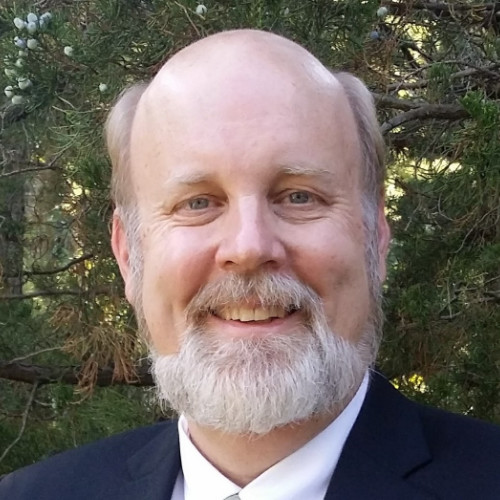Fiber Isn't Everywhere
ORANGE, CONN.—Although you will never see mention of it in a carrier's advertisement, the plain truth is that optical fiber isn't everywhere. While high-rise buildings in major city cores may have easy access to multiple providers (yes, that means you, New York), in many metro areas there may only be one or two providers, and they often don't connect to every building. Things can be even worse in rural locations, where the nearest fiber-optic connection point may be miles away. The cost and time required to obtain permits, perform trenching, install the fiber and restore the surface can be very high.
Fiber-optic connections are typically required for any type of service in excess of 10 Mbps, and many lower-speed services. Broadcaster-specific services such as TV1, 270 Mbps and 1.5 Gbps uncompressed HD services are exclusively installed over fiber-optic connections today. Paul Atwell, president of Media Transport Solutions, a consulting firm that specializes in designing and installing high speed video and data circuits for the broadcast industry, said "All the carriers we use require fiber for anything over 50 Mbps, including Ethernet."
Unfortunately, having fiber in a building is no guarantee of short installation times. "In at least half of our applications, our clients need to wait more than 90 days for a new high-speed video or data circuit to be installed by a carrier." Atwell said. "Very often, these long lead times are caused by the need to install fiber at some point along the circuit path. In other cases, it's the amount of time required to provision the service for a new customer, particularly if the circuit passes through multiple carriers."
WORKAROUNDS
When high-speed services are needed quickly, due to urgent new service requests or replacements for failed equipment, broadcasters can use technologies other than fiber optics to provide a connection while waiting for a new service to be provisioned. Three main alternatives are commonly used: wireless connections, Internet links, and combining multiple low speed services. Each of these has benefits and drawbacks, as described in the following paragraphs. (See Fig. 1 for a breakdown.)

Fig. 1 Fiber vs. other common connectivities
Fixed wireless technology that can handle tens or hundreds of Mbps typically operate in the GHz range, which means that the circuits need to be line-of-sight and can range up to a few miles in length. If obstacles are in the direct path, then a repeater can be used to re-route the path. Many of the units require fairly low power (less than 20 Watts) and often can be mounted on existing antenna towers. Unlicensed bands are available, but carry a higher risk of interference. One compromise is the 3.65 GHz band, which uses a relatively simple license procedure. One big advantage of wireless systems is freedom from recurring costs—once the links are purchased and installed, the cost to operate these systems is very low. Many users choose to encrypt data flowing over wireless links to prevent unauthorized reception of the signals.
(Note that mobile wireless services, provided with 3G or 4G phone networks, don't offer the high sustained speeds needed by most broadcasters.)

Online services such as speedtest.net help determine the speed of your Internet connection. Internet connections are available from a variety of carriers in most markets, but the bandwidths are often limited to less than 20 Mbps, particularly for uploads. This limit is starting to go up as carriers roll out 100 Mbps services, but there is not a lot of historical data on whether these links will support continuous usage at these speeds. When pricing these services, broadcasters need to remember that they need two Internet access links—one for each end of the circuit. Plus, most of these services are asymmetrical, limiting end-to-end throughput to the upload speeds from each end. Pricing tends to be quite attractive for these connections, but broadcasters need to remember that there are no performance guarantees for data moving across the public Internet. Plus, all data must be encrypted to prevent unauthorized access.
Multiple low speed circuits, such as T1 circuits that operate at 1.5 Mbps, can be combined to deliver higher speed services using an inverse multiplexer. The inverse mux takes a single high-speed stream (such as an ASI or an IP signal) and splits it up to flow over multiple circuits. At the far end, another device reassembles the data into a single large stream, while buffering to account for any differences in the circuit delays. Since T1 circuits can be installed without fiber, this solution works at many locations, even rural ones. However, the total amount of bandwidth is limited by cost constraints (in many markets, four T1 signals are almost as expensive as a 45 Mbps DS3 signal) and by the practicalities of having multiple circuits installed.
THE GOOD NEWS
Since most of the cost of installing fiber-optic links is due to the cost of construction, and the costs of the actual fibers is so low, carriers typically install multiple fibers whenever they connect to a new building. This means that once a building is equipped with fiber, new services can be installed much more quickly, and at a lower cost to carriers. This is part of the reason why long haul carriers over the past few years have been busy acquiring local carriers who have connections to lots of local buildings. Once the "last mile" is in place, the bandwidth available to broadcasters is essentially unlimited.
The professional video industry's #1 source for news, trends and product and tech information. Sign up below.
Wes Simpson is President of Telecom Product Consulting, an independent consulting firm that focuses on video and telecommunications products. He has 30 years experience in the design, development and marketing of products for telecommunication applications. He is a frequent speaker at industry events such as IBC, NAB and VidTrans and is author of the book Video Over IP and a frequent contributor to TV Tech. Wes is a founding member of the Video Services Forum.

